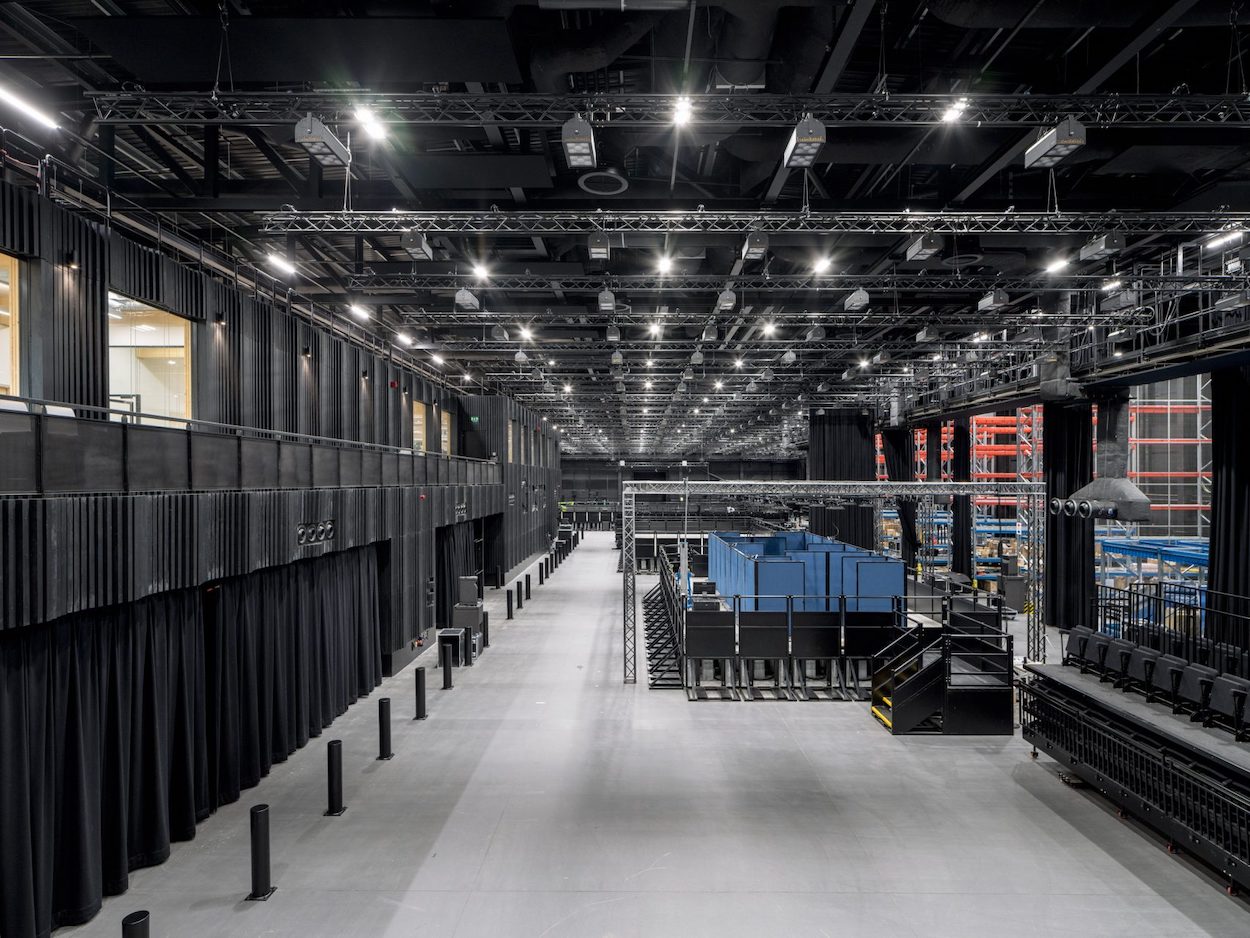What’s exactly inside “a building to house the world?” When it comes to the Person-Environment-Activity Research Laboratory (PEARL) at University College London, the answer is just about anything. The sprawling, first-of-its-kind research facility simulates urban settings to research how environmental factors influence people’s perception and behavior. More than 500 people gather at a time in immersive 130-foot-long stages, where state-of-the-art loudspeakers by sound technology company L-Acoustics playing birdsong and thunderstorms, theater lighting affixed to trusses, and scent diffusers recreate the sensations of railway stations, town squares, and parks.
According to the researchers, PEARL’s goal is to help create a world where everyone can achieve a better quality of life. So far, UCL has already conducted a platform-train interface experiment for the Thameslink railway, recreating a full-size train carriage and station platform to evaluate its operating conditions. In order for the experiments to succeed, architects Penoyre & Prasad devised a subtle design scheme that essentially vanishes during experiments. Black paint coats most of the interior, which was optimized to reduce background noise and reverberation to distract participants from the sensation of being in a building. That’s no small achievement considering the warehouse-like structure clocks in at 43,000 square feet.
“Ultimately, this is a big, black box of tricks,” Michael Fostiropoulos, an associate at Penoyre & Prasad, told Dezeen. “It’s a sophisticated, technical building, but it has a softer side to it as well; it’s community-facing. The aim is for members of the public to drop in and talk with a researcher about the problems they face, for example, navigating the high street in their wheelchair, and then six months later participate in an experiment exploring new solutions to that problem.”


